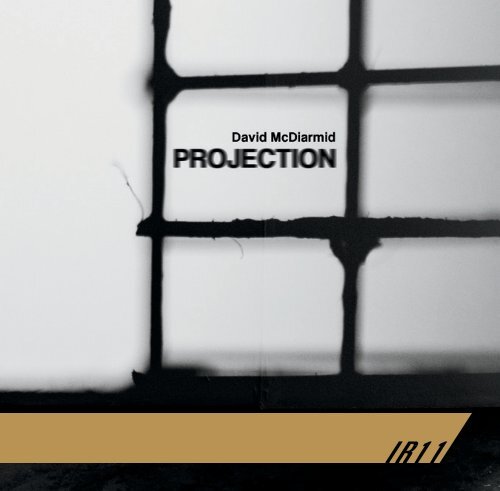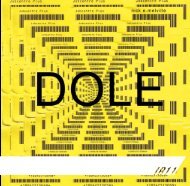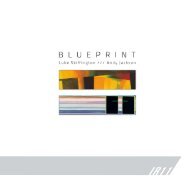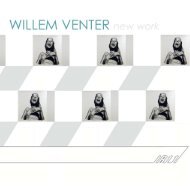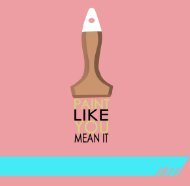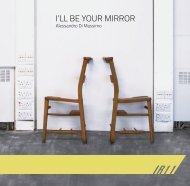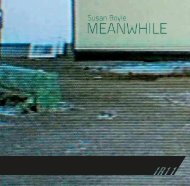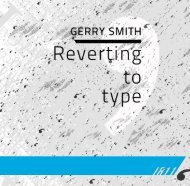Projection by David McDiarmid
This catalogue accompanies: Projection, an exhibition by David McDiarmid 10 - 25 April 2015, Interviewroom11, Edinburgh. © the artists 2015, all the rights reserved. First published by IR11 publications, 2015.
This catalogue accompanies:
Projection, an exhibition by David McDiarmid 10 - 25 April 2015, Interviewroom11, Edinburgh.
© the artists 2015, all the rights reserved.
First published by IR11 publications, 2015.
Create successful ePaper yourself
Turn your PDF publications into a flip-book with our unique Google optimized e-Paper software.
<strong>Projection</strong><br />
Detail<br />
5
6
7
8
Model<br />
Carbon fibre, balsa and slide mount<br />
models. Set of 40 models.<br />
Each model 5x5 cm.<br />
Detail<br />
9
10
<strong>Projection</strong><br />
Installation view.<br />
11
<strong>Projection</strong><br />
Installation with carbon fibre,<br />
balsa, slide mount models<br />
and 35mm slide projector on plinth.<br />
12
13
14
15
16
17
Accession<br />
Plaster cast tiles with pigment and<br />
jesmonite inlay, with acrylic and gold<br />
leaf model on plinth.<br />
Varying sizes.<br />
Detail<br />
18
Accession<br />
Installation view.<br />
19
20
21
22
Abeyance<br />
Watercolour and varnish on cement cast tiles<br />
mounted on gold leaf and pine dowel model<br />
with pillar.<br />
244 x 60 x 40 cm<br />
Details<br />
23
24
25
Abeyance II<br />
Faux marble cast tiles with gold pigment inlay<br />
with bamboo cane model and plinth<br />
16 x 12 cm<br />
Installation view<br />
26
Abeyance II<br />
Installation view<br />
27
28
29
30
Megalomania II<br />
Acrylic, pigment and tape on cement cast tiles mounted on board.<br />
160 x 100 cm<br />
Installation view<br />
31
32
33
34
Prop II (Basilica)<br />
Plaster cast tiles with pigment and jesmonite inlay<br />
with faux marble cast model on plinth.<br />
54 x 54 x 100 cm<br />
Installation view<br />
35
Prop II (Basilica)<br />
Installation view<br />
36
Prop II (Basilica)<br />
Detail, installation view<br />
37
38
39
Archetype<br />
Plaster cast oil prints<br />
125 pieces<br />
each piece 15 x 10 cm<br />
Detail<br />
40
Archetype<br />
Installation view<br />
41
42
43
44
Megalomania IV<br />
Plaster cast tiles and inlaid faux marble mounted on board.<br />
Diptych, each panel 90 x 60 cm<br />
Installation view<br />
45
<strong>Projection</strong><br />
Exhibition view<br />
46
47
48
49
50
51
52
53
54
55
56<br />
The Wizard of Oz<br />
Peter Chalmers
Pay no attention to that man<br />
behind the curtains.<br />
The Wizard of Oz<br />
All Art, certainly celebrated Art, is<br />
widely accepted to be a response<br />
to reality - directly or indirectly, one<br />
way or another. The earliest known<br />
works of Art, found in the Indonesian<br />
island of Sulawesi, are of hands and<br />
animals - inward and outward looking.<br />
They are representations of the hands<br />
that made them and leave a trace of<br />
their maker’s existence - a seemingly<br />
timeless need of mankind.<br />
<strong>David</strong>’s McDairmid’s practice<br />
playfully, and somewhat ironically,<br />
explores an aspect of reality concerned<br />
with delusion and illusion, relevance,<br />
deception and ultimately the struggle<br />
for power: megalomania.<br />
Monumental gateways have been<br />
built and used for thousands of<br />
years. The Triumphal Arch, considered<br />
to be a Roman invention, is now<br />
emulated the world over. In one, it<br />
encapsulates the megalomaniac’s<br />
desire for legacy and establishes a<br />
history, true or not, that the creator<br />
desires to be remembered. It is<br />
an icon, a conspicuous symbol of<br />
omnipotence - whether given or<br />
taken. The megalomaniac lives Jean-<br />
Paul Satre’s mantra of Man’s desire<br />
(fantasy) to be God.<br />
<strong>McDiarmid</strong>, like many Artists<br />
before him whose work has<br />
been concerned with ideas of<br />
influence and power -Michelangelo,<br />
Warhol and Hirst to name just a few<br />
- has, intentionally or not, created his<br />
own trademark. <strong>David</strong>’s motif is not<br />
of the triumphal arch, but rather the<br />
scaffolding for a triumphal arch.<br />
It is a perfect selection, considering<br />
its temporal nature, strength,<br />
stability and ability to aid in<br />
creation - embodying many of the<br />
megalomaniac’s concerns and wider<br />
ideas around the subject. Each<br />
piece he makes incorporates his<br />
scaffolding motif and from there,<br />
he hangs his other concerns. Every<br />
57
work, although similar, differs from<br />
the next and explores, in part through<br />
pedantry, the nuance and minutiae of<br />
his subject - how apt.<br />
The exhibition at Interviewroom11<br />
centres around his piece <strong>Projection</strong>,<br />
the namesake of the show. This piece,<br />
I understand from having known<br />
<strong>McDiarmid</strong> and his work for several<br />
years now, has been three years in its<br />
gestation. The piece, in mono tone,<br />
flicks and clicks slowly from one slide<br />
to the next, projecting stage <strong>by</strong> stage<br />
the erection of his scaffolding motif - in<br />
a manner similar to the marching of an<br />
totalitarian regime: overwhelming and<br />
unrelenting.<br />
Physically, in its medium, the piece<br />
is a projection, but the title also<br />
describes what the piece is about:<br />
psychology and artifice. The exquisite,<br />
hand crafted models that are projected<br />
are scaled up significantly, with the<br />
central archway above head height,<br />
which makes that playful and profound<br />
point.<br />
Another reading is easily found<br />
too. The archway, historically<br />
designed to be triumphantly walked<br />
through, is projected onto the surface<br />
of a wall - we can not walk through<br />
it. Is <strong>McDiarmid</strong> denying us any<br />
delusional belief in our right to walk<br />
through? Is he asking us to reflect<br />
on what we have really achieved in<br />
our life thus far - the value added<br />
that we bring? In and through this<br />
piece we are reminded, if we had<br />
momentarily forgotten or in fact<br />
been unaware, that all are equal and<br />
none are deserving. The projected<br />
image of power is just that: an image<br />
of it, not the real thing. This triumphal<br />
arch, although dominating the space,<br />
cannot serve its purpose.<br />
Materiality and use of space are<br />
key elements to understanding<br />
<strong>McDiarmid</strong>’s work. On the one<br />
hand his selection of materials<br />
evoke the splendor of past cultural<br />
achievements and developments,<br />
whilst at the same time, referencing<br />
empire, conquest and the spoils<br />
58
of war. Gold Leaf, Marble and the<br />
form of Pietra Dure are frequently<br />
appropriated, but in a further<br />
undermining of the megalomaniac’s<br />
assumption of, or desire for, power,<br />
<strong>McDiarmid</strong> does not always use<br />
the precious original materials that<br />
he appears to. Instead, he favours<br />
manufactured marble and imitation<br />
gold leaf - like <strong>Projection</strong>, when we<br />
shift from the concept of the works to<br />
their physical realisation, the artifice<br />
within megalomania is illuminated.<br />
<strong>McDiarmid</strong>, in part, takes on the<br />
character of megalomanic when<br />
he plays with the installation of his<br />
work: he considers carefully the<br />
environment in which his works are<br />
presented and how his works can<br />
respond to that environment. This, to<br />
a great extent, is done to influence<br />
his viewer. Of particular success in<br />
this presentation of work is his piece<br />
Accession, where if you want to view<br />
the work, which you do, you have to<br />
bend low, uncomfortably low. This little,<br />
golden monument may be small, it may<br />
have no real power over you, but you<br />
have bowed before it and others will<br />
too — how poignant.<br />
Megalomania, specifically<br />
embodied within and through<br />
the triumphal arch, has been the<br />
subject of <strong>David</strong> <strong>McDiarmid</strong>’s<br />
research for the last three years.<br />
His exhibition at Interview room11<br />
stands as a first summation, or<br />
retrospective, of his burgeoning<br />
practice to date.<br />
What next for <strong>McDiarmid</strong>? A<br />
further exploration of and play<br />
on ‘The Power of Art’ I am sure - and<br />
hope.<br />
59
60<br />
In Conversation<br />
Adam Benmakhlouf, <strong>David</strong> <strong>McDiarmid</strong>
Q&A with Adam Benmakhlouf<br />
Scotland Art Editor for The Skinny<br />
Adam Benmakhlouf: It seems like<br />
you’re dealing with the monumental<br />
in a precious way. You quote huge<br />
structures in little sculptures and<br />
detailed paintings. How do you<br />
think about this clash between the<br />
ornamental and the monumental?<br />
<strong>David</strong> <strong>McDiarmid</strong>: I have always felt<br />
really uncomfortable making large<br />
work, especially when dealing with<br />
megalomania as a subject. All these<br />
overtly grand structures... I’m wary of<br />
falling into a trap of just mimicking! It<br />
was, for me, a natural response to work<br />
in this way, as a way of highlighting such<br />
delusions of grandeur. What I would try<br />
to mimic is the way in which an architect<br />
would work and approach the design of<br />
such monumental structures – to try and<br />
get into the mindset of a megalomaniac.<br />
But I’m not an architect so nothing I make<br />
can ever be considered perfect in these<br />
professional terms.<br />
I’m interested in how a little drawing<br />
can end up functioning as an instruction<br />
from an architect to an an engineer.<br />
What happens along these processes<br />
of transcribing and up-scaling, from<br />
drawings to models. I find this more<br />
interesting than seeing the design<br />
actually constructed.<br />
I think that’s the most<br />
AB: important thing about<br />
what’s going on. That it’s not just<br />
quoting this architecture, but the<br />
works posit themselves as a critical<br />
engagement with it. It’s so easy<br />
because I don’t think there is a huge<br />
distinction between monumental<br />
mentality in architecture and then in<br />
art.<br />
At the time when I first<br />
DMc: started researching all<br />
of this I was reading into public art<br />
and there was a lot of criticism to do<br />
with art and architecture and the point<br />
where they combine. Just the fact that<br />
artists seem to be making bigger and<br />
bigger pieces of work now. Fair enough<br />
61
some of it is genuinely quite interesting<br />
but there’s a lot that’s just big and that’s<br />
what’s impressive about it. It’s a funny<br />
one, my subject matter is very much to do<br />
with going big, but then for me to respond<br />
to this <strong>by</strong> making large-scale work just<br />
seems to be the most ridiculously obvious<br />
thing to do.<br />
It’s interesting because just<br />
AB: when you’re saying that there.<br />
It dawned on me a bit, when we were<br />
talking about mimicking the scale.<br />
How you don’t do that. In the way<br />
that you do kind of mimic is with the<br />
materials. Is with the cement and the<br />
tape. Maybe it’s all to do with the scale,<br />
if you were just making big cement<br />
things you would just kind of make a<br />
mini building. If you scale it up with<br />
the same materials it would just be a<br />
building.<br />
Exactly. The title piece of<br />
DMc: the show, <strong>Projection</strong>, is<br />
the nearest to ‘full-scale’ I have allowed.<br />
The piece has been presented a few<br />
times before at different stages in its<br />
development, however, it’s size has<br />
always been limited <strong>by</strong> the space -<br />
it’s height prescribed <strong>by</strong> the gallery<br />
environment. For the IR11 show, the<br />
benchmark was projecting it to a<br />
size in which someone could stand<br />
under the archway. I was pleased the<br />
Interviewroom 11 was tall enough<br />
to do that. At the same time, I see<br />
this piece as a work in progression.<br />
Despite my trepidations of working<br />
in large-scale, I have this ambition to<br />
see the piece exhibited “properly” as<br />
in projected as a full-scale scaffold<br />
structure. This is maybe contradictory,<br />
but I’m comfortable with the idea of<br />
scaling up this particular piece, because<br />
it ultimately remains as a proposal<br />
or a plan, and never fills its inherent<br />
function.<br />
You said before that you<br />
AB: make an effort to work<br />
like an architect. How far does that<br />
go, and how do you consider the<br />
distinction?<br />
62
I do consciously work in a<br />
DMc: similar way to an architect.<br />
I’m always trying to be as accurate as<br />
possible, but there are clear differences.<br />
An easy way to do it would be to do<br />
digital drawings and get the models 3D<br />
printed and it would all be perfect. I think<br />
something is lost in that though. I like<br />
revealing the imperfections of things, and<br />
the hand-made is good for that. It shows<br />
the time taken to make something. I<br />
suppose it all ties into the whole concept<br />
behind megalomania – that agonising<br />
ambition to make something perfect<br />
and monumental and invincible but<br />
never quite managing it. History is full<br />
of examples of these kinds of frustrated<br />
ambitions. A good example of that would<br />
be Albert Speer’s plans for Germany and<br />
the thousand year reich, which barely<br />
lasted a decade.<br />
Was that round the 30s then?<br />
AB: The Nazis?<br />
Yes, the early 40s, too.<br />
DMc: There were plans to<br />
redevelop the whole of Berlin into a<br />
super city called Germania. In the heart<br />
of the city there was going to be a<br />
massive Arch of Triumph. The Nazis<br />
also saw the Champs Elysee in Paris<br />
and planned to mimic this <strong>by</strong> building<br />
an even larger and wider boulevard<br />
leading up to the Arch. Only a handful<br />
of Speer’s buildings remain now. I find<br />
it so interesting yet alien, this mindset<br />
of setting out to make these massive<br />
buildings that will last forever but which<br />
can never succeed. It’s always bound to<br />
fail.<br />
When you talk about<br />
AB: Albert Speer and when his<br />
designs or plans ran adrift, there’s<br />
this relationship between having<br />
“designs” like plotting, and the actual<br />
design of a building.<br />
Indeed, design in terms<br />
DMc: of becoming a scheme,<br />
or a total plan. It can get quite scary.<br />
Speer’s Chancellery Building had these<br />
deliberately highly polished marble<br />
floors which all the guards were<br />
trained to walk on so that they didn’t<br />
63
slip, while anyone visiting the Chancellery<br />
Building would! There was a time in<br />
history when Hitler met Emil Hácha, the<br />
Czech president just as Czechoslovakia<br />
was being invaded. And he’s coming to<br />
have talks, and generally find out what’s<br />
going on. They lead him across the marble<br />
floor and he’s slipping all over the place.<br />
And they take him the long way to the<br />
office, down long, echoey corridors, up<br />
and down seemingly endless flights of<br />
steps ... And when they reach the office,<br />
they’ve also set up this almost childish<br />
scenario of a huge desk separating Hitler<br />
on a tall throne on one side and Hacha on<br />
the other side in a small, uncomfortable<br />
chair – it’s no surprise that <strong>by</strong> the time he<br />
arrives to talk to Hitler, he is completely<br />
intimidated and appeases. It’s a really<br />
frightening thing to realise that someone<br />
sat down and planned that kind of<br />
physical interaction.<br />
It’s quite difficult to separate<br />
AB: it. The strategy of design<br />
and then the more broad terms, the<br />
ideology of design as well. It’s funny<br />
thinking of the physical design on<br />
one level and underneath you have<br />
the “designs,” the intentions and<br />
ideologies.<br />
I was reading a book<br />
DMc: recently, Architecture<br />
Depends <strong>by</strong> Jeremy Till. I believe<br />
he was making a point about how<br />
architects tend to search for ideals or<br />
principles about space but that there is<br />
another major factor of architecture to<br />
consider, which is time. This is where<br />
it ties in with all the past and present<br />
personalities like Albert Speer. You<br />
know you’re building something that is<br />
meant to last, but you can never escape<br />
time. It sounds cheesy, but buildings are<br />
built then they’re going to change, and<br />
there are architects that try to escape<br />
that, the changing of buildings. I feel<br />
like that’s the problematic test of good<br />
architecture that still goes on now, that<br />
somehow it’s never going to change or<br />
yield to the people that use it.<br />
And in some ways it’s like<br />
AB: what’s happening when<br />
you make the slide models for<br />
64
<strong>Projection</strong>. You usually try and make<br />
it perfect. But then you use these<br />
quite recalcitrant materials, that will<br />
always do something else than what<br />
you envision. People live their lives<br />
in a building, but then that results in<br />
everyday edits and breakages, spillages<br />
and stain. What should the attitude<br />
be, accommodate change or create<br />
space that in a kind of paranoia tries to<br />
predict all future uses and accidents?<br />
It’s a question of control. To<br />
DMc: use a very simple example<br />
from everyday life, the likes of chip stones<br />
are used in parks or squares to discourage<br />
people from walking certain routes. It’s<br />
not necessarily a bad thing but, but it<br />
does make me think how easy it is to<br />
build an environment to control the way<br />
someone walks around it.<br />
This is a good way into the<br />
AB: space of your installations.<br />
You have to in some way dictate the<br />
space, I did get a bit confused because<br />
that projection wall was a built wall and<br />
then there was the false pillar for your<br />
piece Abeyance as well. They felt<br />
like little interventions and kind of<br />
controlling that space and how it can<br />
be traversed.<br />
Most of the imagery I use<br />
DMc: in my work is of external<br />
structures, rather than architectural<br />
interiors. I suppose how I address the<br />
subject of interior space is through<br />
the installation of the work in the<br />
gallery space. For a long time I was<br />
very uncomfortable hanging paintings<br />
on the wall. I was always interested<br />
in presenting the paintings with the<br />
models. Fundamentally I still describe<br />
myself as a painter even though a lot<br />
of the works you probably wouldn’t<br />
describe as painting. I always feel I<br />
solve problems in a painterly way. I<br />
won’t present a model on its own, I’ll<br />
present a painting with it because it<br />
sets up for me an interesting connection<br />
between design and construction,<br />
proposal and projection, drawing, model<br />
and finished concept.<br />
65
There’s a kind of dominance,<br />
AB: laying out an exhibition. Do<br />
you feel that?<br />
In some respects, but<br />
DMc: it’s more playful for me. I<br />
wouldn’t say I set out to dominate how<br />
the viewer should view or experience<br />
my work. If I see an unusual aspect to<br />
a space, I immediately see that as a<br />
challenge to address. There’s a lot of site<br />
specific interventions going on as well,<br />
like the addition of the temporary pillar<br />
in the space for Abeyance. The pillar was<br />
actually going to be in a different place<br />
for the show at IR11 until we noticed<br />
the skylight next to the diagonal wall.<br />
I was always really unsure of what to<br />
do with that diagonal. It was such a big<br />
feature but awkward to find the right<br />
work to hang for it. We ended up putting<br />
the pillar there and it worked well as an<br />
entry into this second space in the show.<br />
It’s almost awkward looking in images,<br />
but I think it works quite well in the actual<br />
space. There’s something nice about the<br />
skylight above it. There’s this wonderful<br />
light which illuminates the pillar and<br />
gives it this very grandiose presence; it<br />
reminded me of the black space obelisk<br />
in the film Space Odyssey. I found it<br />
amusing seeing how people responded<br />
to it. In some cases people totally<br />
missed that it was a fake pillar!<br />
These superfluous pillars<br />
AB: bring up the idea of the<br />
non-functionality of ornament and<br />
the kind of features that might just<br />
be intended to dominate a space or<br />
to be impressive. But you’re going<br />
for odd spatial decisions, specifically<br />
seeking out interestingly awkward<br />
configurations. I think this idea of<br />
the different kinds of architectural<br />
difficulties and even failure seems<br />
to cut across a lot of your practice.<br />
There’s that point again about not<br />
just using a 3D printer, so not making<br />
the perfect models. So you frustrate<br />
yourself, and <strong>by</strong> doing so you bring all<br />
the issues of design going awry right<br />
to your desk <strong>by</strong> using media that<br />
will keep resulting in this moment<br />
of self-defeating. It shrinks down to<br />
the role of an architect to its most<br />
66
frustrating that you might intend to<br />
make a building or sculpture or painting<br />
in a certain way, and have plans and<br />
strategies but they will literally in the<br />
case of the architect, certainly fall or<br />
be torn down. And it brings that whole<br />
timeline of intent and frustration<br />
directly into your process just <strong>by</strong><br />
using those (in conventional terms)<br />
unsuitable materials. That’s one of the<br />
most successful critical parts to what<br />
your doing.<br />
It’s interesting because<br />
DMc: what you’re saying ties<br />
in with what I’m reading in Architecture<br />
Depends just now. That architecture<br />
depends on way more things than it<br />
accounts for. There’s a nice section I really<br />
like: “The gardener gets rid of weeds as<br />
part of the controlling of nature. As we<br />
shall see with architecture as with any<br />
project of the modern age, the more<br />
one attempts to eliminate the other of<br />
order the more it comes back to haunt<br />
one. Weeds always grow back.” And it’s<br />
basically suggesting that spend ages over<br />
something to make it perfect, but know<br />
it will always ultimately be in vain. The<br />
whiter the wall, the quicker it succumbs<br />
to dirt. I always like my plinths to look<br />
totally pristine. I won’t bother painting<br />
them until the day of the show and I<br />
know they’re in place and I won’t have<br />
to touch them. I’ll have moved them<br />
wearing white gloves and painted<br />
them when in place. But somehow<br />
there is always some imperfection I<br />
notice - the slightest of scuffs, marks or<br />
cracks- and the very fact it’s white, only<br />
serves to contrast and highlight these<br />
imperfections! I think every painter,<br />
artist or architect have these moments.<br />
And I think every one of them knows<br />
where they are in their works and can’t<br />
stop looking at them. It’s just all part of<br />
the game!<br />
67
I would just like to give a huge thank you to everyone who came along to the<br />
exhibition and also to all of those who helped me along the way - it means a lot!<br />
Special thanks must go to: Scott McCracken, Mirja Koponen and all the volunteers<br />
at Interviewroom11 for all their support and assistance leading up to the show.<br />
Paul Corbett for his wonderful design work for the exhibition promotional<br />
materials. Dominic McIvor for his hard work and assistance during the (fairly<br />
mammoth) install. Jon Nicolson for his technical assistance building the <strong>Projection</strong><br />
wall. Callum Kellie and Gray’s School of Art for their support and for lending me<br />
the projector used in the title piece. Martin Ramsey for his help delivering the<br />
work. My dad for all his wonderful ongoing help and support. And finally to my<br />
Visual Artist Unit family who I share studios with and bounced off many an idea<br />
along the way. This is <strong>by</strong> no means an exhaustive list, but I am so grateful to<br />
everyone who was involved and now owe a lot of people a lot of pints!<br />
This catalogue accompanies:<br />
<strong>Projection</strong>, an exhibition <strong>by</strong> <strong>David</strong> <strong>McDiarmid</strong><br />
10 - 25 April 2015, Interviewroom11, Edinburgh<br />
http://www.davidmcdiarmid.co.uk/<br />
© the artists 2015, all the rights reserved<br />
Texts © Peter Chalmers, Adam Benmakhlouf, <strong>David</strong> <strong>McDiarmid</strong><br />
First published <strong>by</strong> IR11 publications, 2015<br />
Photo © Laura Falcone<br />
exept for Craig Gibson © pp. 3, 8, 17, 21, 24, 32<br />
and <strong>David</strong> Guillen © pp. 22, 36, 40, 42<br />
Design and cover <strong>by</strong> Alessandro Di Massimo<br />
Typeset in Titillium, designed <strong>by</strong> Campivisivi, Urbino (IT) - SIL Open Font License, Version 1.1
Interviewroom11 is an artist run gallery and project space located in the centre of<br />
Edinburgh. We are part of ForestCentre+, an arts complex including artist studios<br />
and resource space situated in Argyle House, an old 1960s brutalist office block,<br />
currently being rehabilitated for creative industry and technology uses.<br />
Gallery Committee & Co-Directors:<br />
Mirja Koponen<br />
Scott McCracken<br />
Ana González Chouciño<br />
Willem Venter<br />
The exhibition “<strong>Projection</strong>” was coordinated <strong>by</strong> Scott McCracken<br />
Volunteer gallery assistants: Carmel Pia, Paula Burbicka, Hugo Villalobos Solís,<br />
Sandra García Peinado, Sandra Robles Merlos, Rafael González Rojo, Laura<br />
Matheson, Sarah Morgan, Mo Papadaki.
<strong>David</strong> <strong>McDiarmid</strong><br />
PROJECTION<br />
IR11 publications, 2015


